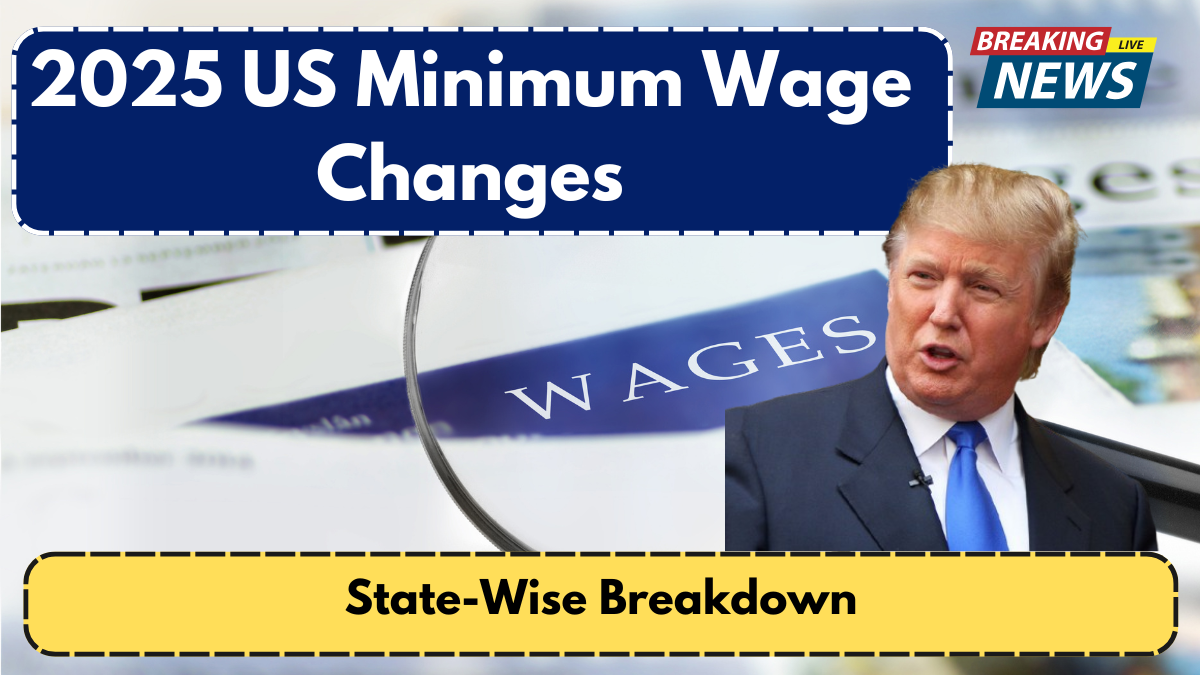As of June 2025, significant adjustments in the minimum wage are underway across the United States. These changes are part of broader legislative efforts to address wage inequality, respond to inflation, and support labor rights USA-wide. With the federal minimum wage unchanged since 2009, states have taken matters into their own hands. The 2025 wage law shifts highlight a patchwork of state-led initiatives with distinct timelines and wage goals.

A State-by-State Breakdown of the 2025 Wage Law Changes
The following table outlines the updated minimum wages in various states as of June 2025. This reflects legislative updates, inflation indexing, and phased-in changes from previously approved laws.
| State | New Minimum Wage (2025) | Notes on Changes |
|---|---|---|
| California | $17.00 | Indexed to inflation; applies to all businesses |
| New York | $16.50 (NYC: $17.50) | Regional rates; NYC leads increase |
| Florida | $14.00 | On track for $15 by 2026 |
| Illinois | $15.80 | Final phase of multi-year wage raise |
| Texas | $7.25 | No change; follows federal baseline |
| Washington | $17.25 | One of the highest; annual inflation adjustment |
| Arizona | $15.35 | CPI-based increase |
| Colorado | $15.85 | Inflation-adjusted annually |
| Oregon | $15.95 (Portland: $17.00) | Regional tiering remains in effect |
| Pennsylvania | $10.00 | First increase in over a decade |
What’s Fueling the Minimum Wage Increase by State?
The momentum behind these changes comes from a mix of economic pressure, advocacy for labor rights USA-wide, and political promises. Inflation has played a key role. In cities where the cost of living has skyrocketed, stagnant wages became untenable. For example, in places like Seattle, Denver, and San Francisco, the 2025 wage law adjustments were driven not only by affordability concerns but also by a growing recognition that full-time workers should not live in poverty.
Another force: public referendums. In Florida, voters approved a gradual raise to $15, demonstrating direct civic engagement. Other states are using legislative action and automatic inflation-based indexing to keep up without political gridlock.
Disparities and Delays: States That Haven’t Caught Up
While many states are making progress, a few still lag. Texas, for example, continues to adhere to the federal minimum of $7.25 per hour, unchanged for over 15 years. This creates a sharp contrast when neighboring states like New Mexico and Colorado push past the $15 mark. The disparity has sparked debates around migration of low-wage workers and cross-border economic stress.
Business groups in states without increases argue that abrupt wage hikes could strain small businesses. However, data from states with phased approaches suggest that gradual implementation can reduce economic shock while still improving worker quality of life.
Implications for Employers and Workers in 2025
For employers, compliance with new laws requires close attention to regional variations. Multistate businesses must adjust payroll, retrain HR departments, and ensure timely implementation to avoid penalties. Meanwhile, workers in states embracing higher wages are likely to experience improved living conditions, reduced reliance on public assistance, and better job retention.
There’s also a growing shift toward wage transparency and equity audits. As labor rights USA debates evolve, wage law enforcement and data reporting are becoming central to policy discussions.
FAQ
What is the highest minimum wage in the USA in 2025?
Washington currently holds the highest statewide minimum wage at $17.25 per hour, while Portland, Oregon has a localized rate of $17.00.
Is the federal minimum wage changing in 2025?
No, the federal minimum wage remains at $7.25. However, most states have implemented their own increases due to federal inaction.
Which states have the lowest minimum wage in 2025?
States like Texas, Georgia, and Wyoming continue to follow the federal minimum of $7.25, making them the lowest in the nation.
How are minimum wages determined in 2025?
Most states now use Consumer Price Index (CPI) adjustments, legislative action, or voter initiatives to determine minimum wage increases.
What does the 2025 wage law mean for part-time workers?
The new wage laws apply to most hourly workers, including part-time employees. However, some exemptions may still apply based on specific job categories.
For More Information Click Here



